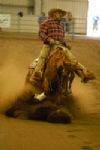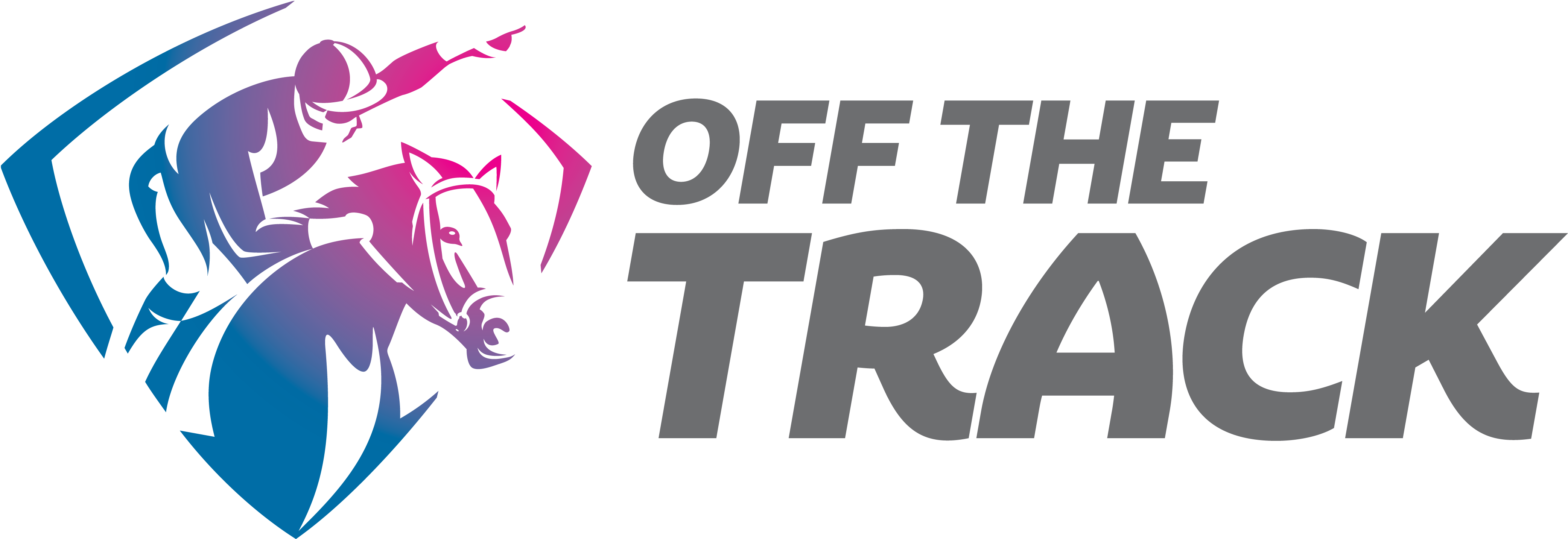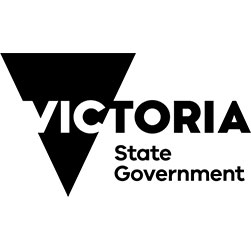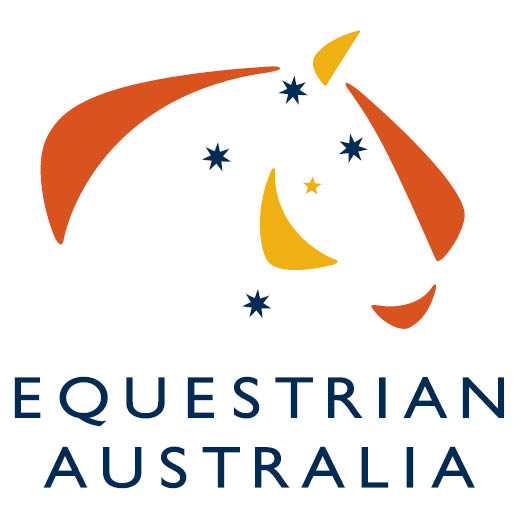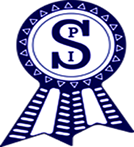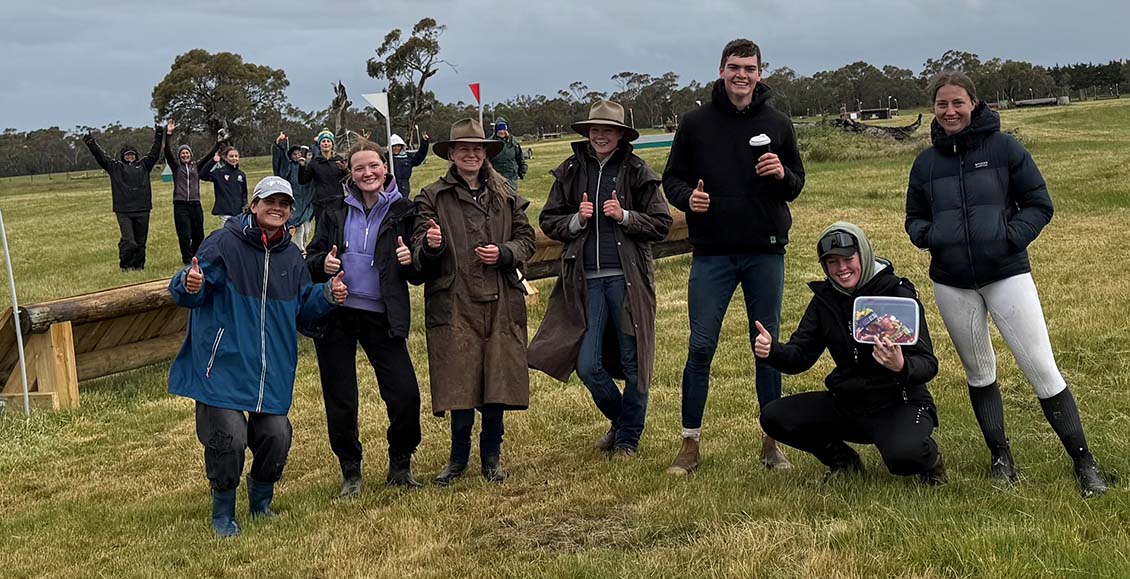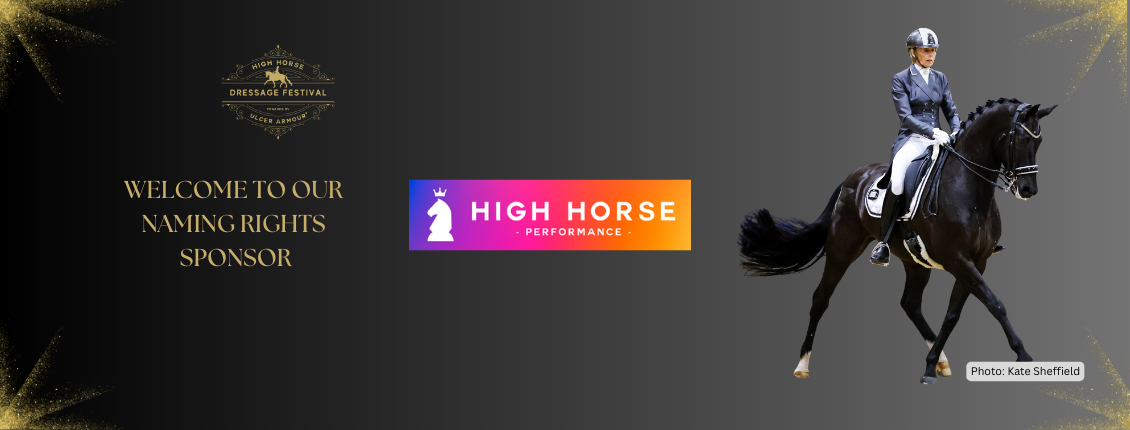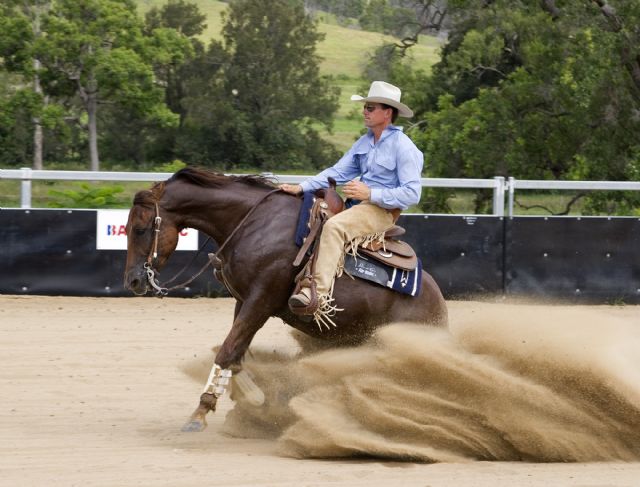
WHAT IS REINING?
Reining is a western riding competition where the rider guides the horse through a precise pattern of circles, spins, and stops. All work is done at the lope (a slow, relaxed version of the canter) and gallop. Reining is often described as a Western form of dressage riding, as it requires the horse to be responsive and in tune with its rider, whose aids should not be easily seen. Reining judges the horse on its ability to perform a set pattern of movements. The horse should be willingly guided or controlled with little or no apparent resistance and dictated to completely.
MOVEMENTS
The reining pattern includes an average of eight to twelve movements which must be executed by the horse. All patterns require the following movements:
- Circles: the horse must perform large, fast circles at a near-gallop and smaller, slow circles at a lope. They should be perfectly round, with the rider dictating the pace of the horse. There should be an easily seen change of speed as the rider transitions from the large, fast to the small, slow circles.
- Spins or Turnarounds: beginning from a standstill, the horse spins 360 degrees (up to four and one-quarter full turns) in place around its stationary inside hind leg. The hind pivot foot remains in essentially the same location throughout the spin, though the horse will pick it up and put it down as it turns. Spins are judged on correctness, smoothness, and cadence. A pattern requires at least one set of spins in each direction. The spin is one of the most difficult and crowd-pleasing maneuvers.
- Flying change: the horse changes its leading front and hind legs at the lope mid-stride, during the suspension phase of the gait. The horse should not break gait nor change speed. A horse taking more than one stride to complete the change, or a horse that changes early, late, or that changes only the front feet and not the hind feet will be penalized.
- Rundown: the horse gallops or "runs" along the long side of the arena, at least 20 feet (6 m) from the fence or rail. A rundown is a required movement prior to a sliding stop and a rollback.
- Sliding Stop: the horse accelerates to a gallop and then suddenly comes to a complete halt, planting its hind feet in the footing and allowing its hind feet to slide, while continuing to let its front feet "run" forward. The back should be raised upward and hindquarters come well underneath. A particularly powerful stop may, depending on arena conditions, produce flying dirt and a cloud of dust. The movement should finish in a straight line, and the horse's position should not change. This movement is a crowd favorite, along with spins (see above).
- Rollback: the horse immediately, without hesitation, performs a 180-degree turn after halting from a sliding stop, and immediately goes forward again into a lope. The horse must turn on its hindquarters, bringing its hocks well under, and the motion should be continuous with no hesitation.
- Backup: the horse backs up for at least 10 feet (3 m). The horse must back in a perfectly straight line, stop when asked and hesitate a moment before the next movement.
THE HORSE
Reining may be performed by any horse, but the Quarter Horse is particularly, dominate in the field. The reining horse must be agile, quick, and very responsive to the rider's commands. Powerful hindquarters are required to hold position in a sliding stop or a rollback, excellent coordination is required for proper spins and flying lead changes. The horse must also have an excellent temperament to perform with both speed and precision.
EQUIPMENT AND ATTIRE
Riders must use a western saddle. Spurs are allowed, but whips are not. Bridles are western-styled, without a noseband or caveson. There are very strict rules about what types of bits and bosals are legal.
Riders must wear a long-sleeved Western shirt, jeans, a cowboy hat, and cowboy boots. In most competitions, they also wear chaps.
WHERE CAN I FIND OUT MORE?
If you would like to find out more about reining, contact a club near you (they are listed below). Reiners are very friendly and welcoming and you don't need a reining horse to get started – just come along and have a go in some of our "green as grass" classes – these are classes for riders who may not have a reining horse or who have not tried reining before. Give it a go – it is GREAT fun but be warned, you may get hooked!

